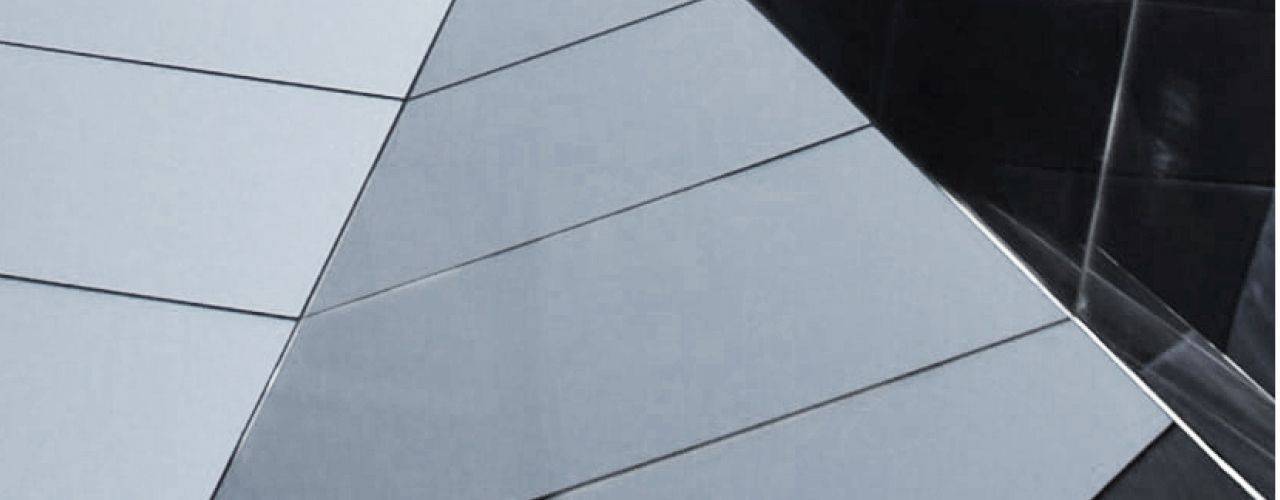Insights
Summary of Inflation Reduction Act changes to production tax credit and investment tax credit for renewable energy
Jun 07, 2023Overview
The Inflation Reduction Act of 2022 (the “IRA”) made major changes to expand and restructure both the Production Tax Credit (the “PTC”) under Section 45 of the Internal Revenue Code (the “Code”)[1] and the Investment Tax Credit (the “ITC”) under Section 48.
Prior to the IRA, both the PTC and the ITC were subject to phase-out rules, which reduced the credit percentages, and eventually would have eliminated the credits, based upon the date on which construction of the project commenced. The IRA reinstated the full pre-phase out credit percentages for projects placed in service beginning in 2022 and extended the availability of the credits for additional years, and made a number of other changes to the PTC and the ITC, eventually migrating to new technology-neutral, “zero emissions” PTC and ITC beginning in 2025.
Among the most significant changes to the PTC and the ITC effected by the IRA:
- The IRA implemented a two-tier credit regime, effectively re-instituting the pre-IRA, pre-phase out rates for projects satisfying (or qualifying for an exemption from) new prevailing wage and apprenticeship requirements, and limiting other projects to a rate of 1/5 of the pre-phase out credit rates.
- The IRA also introduced bonus credits for projects meeting new domestic content requirements (which generally require that all steel and a specified percentage of all “manufactured product” included in the facility is produced in the United States) and for projects located in energy communities (generally defined to include projects located (a) on a brownfield site, or (b) in communities with (i) higher than average employment or tax receipts from fossil fuel industries and (ii) higher than average unemployment rates, or (c) in the vicinity of certain closed coal mines or retired coal-fired electric generating units).
- Beginning in 2025, Section 45 and Section 48 will be replaced by new technology-neutral, zero-emissions provisions under Section 45Y and 48E, respectively. These provisions will require the Internal Revenue Service (“IRS”) to determine the carbon dioxide-equivalent emissions for different types of facilities, and will limit the PTC and ITC to those facilities that meet the zero-emissions standard.
- The IRA added two new alternatives for developers to monetize the PTC and the ITC, including providing a “direct-pay“ alternative for certain nonprofit and government entities, and enabling owners of qualifying facilities to transfer (i.e. sell) credits to an investor, potentially eliminating the need for developers to use existing partnership-flip, sale-leaseback or lease pass-through structures.
- The ITC was expanded to include stand-alone energy storage facilities (i.e. batteries), certain interconnection property, and qualifying nuclear power plants will be eligible for the post-2025 PTC.
The Department of the Treasury and the IRS have issued preliminary guidance on some aspects of the PTC and ITC changes in the IRA, but additional guidance is needed on many significant aspects of the changes.
These and other changes are described in more detail below.
Summary of Production Tax Credits Changes
A. Pre-IRA Production tax Credit
Prior to the enactment of the IRA, the principal features of the PTC under Section 45 were:
- The PTC was available annually for a period of 10 years, in an amount equal to a specified credit rate multiplied by the number of kWh or electricity produced by the taxpayer from qualified resources at a qualified facility and sold to an unrelated party.
- The term “qualified resources” included wind, solar, biomass, geothermal and certain other sources.
- Although solar energy was a “qualified resource,” the PTC was not available for solar projects due to the “qualified facility” requirements.
- Nuclear energy was not a qualified resource (although a separate PTC is available for electricity produced from certain nuclear power plants under Section 45J).
- The term “qualified facility” was subject to different requirements based upon the type of resource. Generally, facilities using most other PTC-eligible resources (including wind) could be “qualified facilities” if construction of the facility commenced before January 1, 2021. Thus, the PTC was no longer available for wind developments for which construction started after December 31, 2020. Solar generation facilities were “qualified facilities” only if placed in service before January 1, 2006, so the PTC was no longer available for solar energy.
- The PTC rate was 1.5 cents per kWh, subject to an inflation adjustment based upon the GDP implicit price deflator from 1992, and subject to a reduction based upon the price of electricity.
- The credit rate for electricity produced from wind facilities was subject to a phased reduction based upon the date on which construction of the facility commenced.
- The credit rate for electricity produced from certain other types of facilities was also subject to reduction.
- The IRS, through a series of Notices, had established rules for determining when construction on a facility started.[2] Generally, under these Notices, construction is considered to have commenced either when “physical work of a significant nature” is completed, or when the taxpayer incurs at least 5% of the total costs of the facility, in each case subject to a requirement that the taxpayer make continuous progress, or continuous efforts, to complete construction.
- The credit was reduced to the extent it was financed with the proceeds of tax-exempt bonds and other subsidized energy financing.
- Generally, the PTC was available only to the taxpayer that owned the qualified facility. For qualified facilities owned by taxpayers who did not have sufficient tax liability to use the credits directly, credits could be monetized only by using structures that enable a tax credit investor to acquire an ownership interest in the facility, such as through a partnership-flip, sale-leaseback or lease pass-through structure.
B. IRA Production Tax Credit Changes – Prior to 2025
The IRA made several major changes to the Section 45 PTC for projects placed in service after December 31, 2021, and for which construction began before January 1, 2025. These changes include:
- Solar electric generation facilities will again qualify for the PTC. Electricity from solar facilities will qualify for the PTC if the facility is placed in service after the date of enactment of the IRA, and construction on the facility commences prior to January 1, 2025.
- The phase-out of the credit rates was eliminated, but the credit rate provisions were replaced by a two-tier credit rate structure.
- The “base” credit rate is 0.3 cents per kWh.
- The credit rate is increased by a factor of five (i.e. to 1.5 cents) if the facility satisfies, or is exempt from, new “prevailing wage and apprenticeship” requirements (the “PWA Requirements”).
- Generally, to satisfy the PWA Requirements, the owner of the project must pay wages for all labor employed by the taxpayer or any contractor or subcontractor of any tier in connection with the construction, alteration or repair of the facility at wage rates not less than the prevailing wage rates in the locality of the project and must ensure that a specified percentage of the total hours of construction labor are performed by qualified apprentices. Failure to comply does not prevent the project from using the higher credit rate if the taxpayer cures the failure by paying back wages and paying specified penalties.
- A project will be exempt from the PWA Requirements if it has a maximum net output of less than 1 megawatt, or if construction of the facility started prior to January 30, 2023. The same “start of construction” rules adopted for the PTC phase-out under pre-IRA law generally apply for this purpose.
- The credit rate remains subject to the inflation adjustment based upon the GDP implicit price deflator from 1992.
- The IRA makes available certain “bonus” credits, each equal to 10% of the credit amount of the PTC determined without regard to the bonus provisions. For example, if a project satisfies, or is exempt from, the PWA Requirements, the credit rate for a project qualifying for one of the bonus credits would increase from 1.5 cents to 1.65 cents per kWh. For a project that is not exempt from and does not satisfy the PWA Requirements, the credit rate would increase the credit rate from 0.3 cents to 0.33 cents. The bonus credits are cumulative, so a project qualifying for more than one bonus credit would receive multiple increases. The potential “bonus” credits include:
- A “domestic content” bonus credit is available for a project if (i) all of the iron and steel and (ii) at least 40% of any “manufactured product” included in the facility is produced in the United States.
- An “energy community” bonus credit is available for a project that is located in an “energy community.” Generally, an energy community is defined to include (i) a brownfield site, (ii) a defined statistical area that has employment in or tax revenues attributable to the fossil fuel sector above specified thresholds, and higher than average unemployment, or (iii) an area in which a coal mine has closed, or a coal-fired electric generating unit has been retired within defined time periods.
- The IRA retains the basis reduction attributable to tax-exempt bond financing, but eliminates the reduction for other subsidized governmental financing.
- The IRA adds new “direct-pay” and transferable credit provisions that may make it easier for developers to monetize the PTC, perhaps without having to implement a partnership-flip, sale-leaseback or lease pass-through ownership structure.
- A “direct-pay” alternative is available for projects owned by certain government or nonprofit organizations. The direct-pay rate is subject to a 10% reduction for projects larger than 1 MW that do not satisfy domestic content requirements and for which construction starts after December 31, 2023.
- A taxpayer may transfer (i.e. sell) credits to an investor in return for a cash payment. The amount received by the taxpayer generally does not represent taxable income, and the purchaser of the credits does not have a tax basis in the credits purchased. The transfer provisions apply only to the tax credits, and not to other tax benefits (such as depreciation deductions attributable to the facility). The purchaser of tax credits may not transfer the credits to another taxpayer.
C. IRA Investment Tax Credit Changes - Beginning in 2025
Beginning in 2025, for facilities the construction of which began after December 31, 2024, the Section 48 ITC will be replaced by a technology-neutral, zero-emissions ITC under Section 48E. Generally, the Section 48E ITC still applies to electricity produced by the taxpayer, but (i) the multiple categories of “energy property” are eliminated, making the ITC available to any means of producing electricity that otherwise qualifies, (ii) in lieu of the categories of energy property, the credit is to be determined with respect to a “qualified facility,” which is a facility with a “greenhouse gas emissions rate” anticipated to be not greater than zero, and (iii) the different “energy percentages” for different categories of energy property are eliminated.
Other features of the Section 48E ITC:
- Several elements of the pre-2025 ITC are retained:
- The Section 48E ITC remains a two-tier credit, with a rate of 6% for facilities that do not satisfy and are not exempt from the PWA Requirements, and a rate of 30% for facilities that satisfy or are exempt from the PWA Requirements.
- The ITC rate can be increased by 10 percentage points (2 percentage points if the facility does not satisfy and is not exempt from the PWA Requirements) if a project is located in an “energy community,” and if the project satisfies domestic content requirements.[1] In addition, the ITC rate can be increased by either 10 or 20 percentage points (reduced if the facility does not satisfy or is exempt from the PWA Requirements) if the facility (i) is located in a “low income community” or on Indian land (for which the bonus credit is 10 percentage points or 2 percentage points, as applicable), or is part of a qualified low-income residential building project or a qualified low-income economic benefit project (for which the bonus credit is 20 percentage points or 4 percentage points, as applicable) and (ii) obtains an allocation from a fixed pool administered by the Department of the Treasury. If a project qualifies under two or more of these provisions, the increase in the credit rate will be cumulative.
- The Section 48E ITC remains available for qualifying stand-alone energy storage property (i.e. battery facilities), subject to some modifications.
- If a facility is financed with tax-exempt bonds, the Section 48E ITC is subject to reduction in the same manner as the Section 48 ITC.
- The direct-pay and transferable credit provisions remain available.
- The Section 48E ITC will be available only for facilities that have “greenhouse gas emissions rate” that is anticipated to be not greater than zero, under the same rules that apply to the Section 45Y PTC. Accordingly:
- The greenhouse gas emissions rate is to be measured in grams of carbon dioxide-equivalent produced by kWh of electricity produced.
- Each year, the Secretary of the Department of the Treasury (the “Secretary”) is to publish a table setting forth the greenhouse gas emissions rates for types or categories of facilities, which rates are to be used by taxpayers. If the rate has not been established by the Secretary, the taxpayer may petition the Secretary to determine the rate. If the emissions rate established by the Secretary for a category of facilities is greater than zero, those facilities will not qualify for the Section 48E ITC.
- The greenhouse gasses emitted by a facility are not to include any carbon dioxide that is captured and either disposed of or used in a manner that satisfies the requirements of the carbon capture and sequestration credit under Section 45Q.
- Section 48E expands the availability of the ITC in certain respects:
- The cost of certain interconnection property may qualify for the ITC.
- Similar to the Section 45Y PTC, facilities representing the expansion of an existing facility can qualify for the ITC.
- Rather than waiting for a facility to be placed in service to claim the credit, the Section 48E ITC can generally be claimed on “progress expenditures” made to develop a facility that has a normal construction period in excess of 2 years. While additional guidance is needed on the application of these rules to the Section 48E ITC, the expectation is that a taxpayer would generally be able to claim the expected tax credit (based on the total cost of the facility) pro rata, each year during the construction period. Any Section 48E ITC claimed with respect to progress expenditures cannot be transferred to other taxpayers.
- The Section 48E ITC is subject to recapture rules under Section 50. For this purpose, recapture can be triggered either if the facility does not remain in use for at least five years, or if the Secretary determines that the greenhouse gas emissions rate from a facility is greater than 10 grams of carbon dioxide equivalent per kWh of electricity produced. A determination that the greenhouse gas emissions rate from a facility exceeds the 10 gram threshold causes the facility to fail to qualify, and to be subject to recapture, in the year in which the determination is made. 5.
- As with the Section 45Y PTC, the Section 48E ITC is subject to phase-out over a three year period for facilities for which construction begins during or after the second year after the later of (i) the calendar year in which the Secretary of the Treasury determines that that annual greenhouse gas emissions from the production of electricity in the United States are equal to or less than 25% of the emissions from the production of electricity in the United States in 2022, or (ii) 2032.
[1] Unless otherwise indicated, references to “Sections” are to Sections of the Code.
[2] Notice 2013-19 set out the initial “start of construction” rules under Section 45 (and PTC-eligible projects electing the ITC), and Notice 2018-59 set out corresponding rules for solar projects under Section 48. Several other Notices were issued to further modify aspects of the start-of-construction rules, including the requirement that the taxpayer maintain a continuous program of construction or make continuous efforts to complete construction, in light of changes in the law, business changes, and the need for greater clarity on some points.
Related Practice Areas
-
Taxation of Corporate Transactions
-
Taxation of Financial Transactions & Institutions
-
Tax Credit Transactions
-
Tax Advice & Controversy
-
Energy Transition




